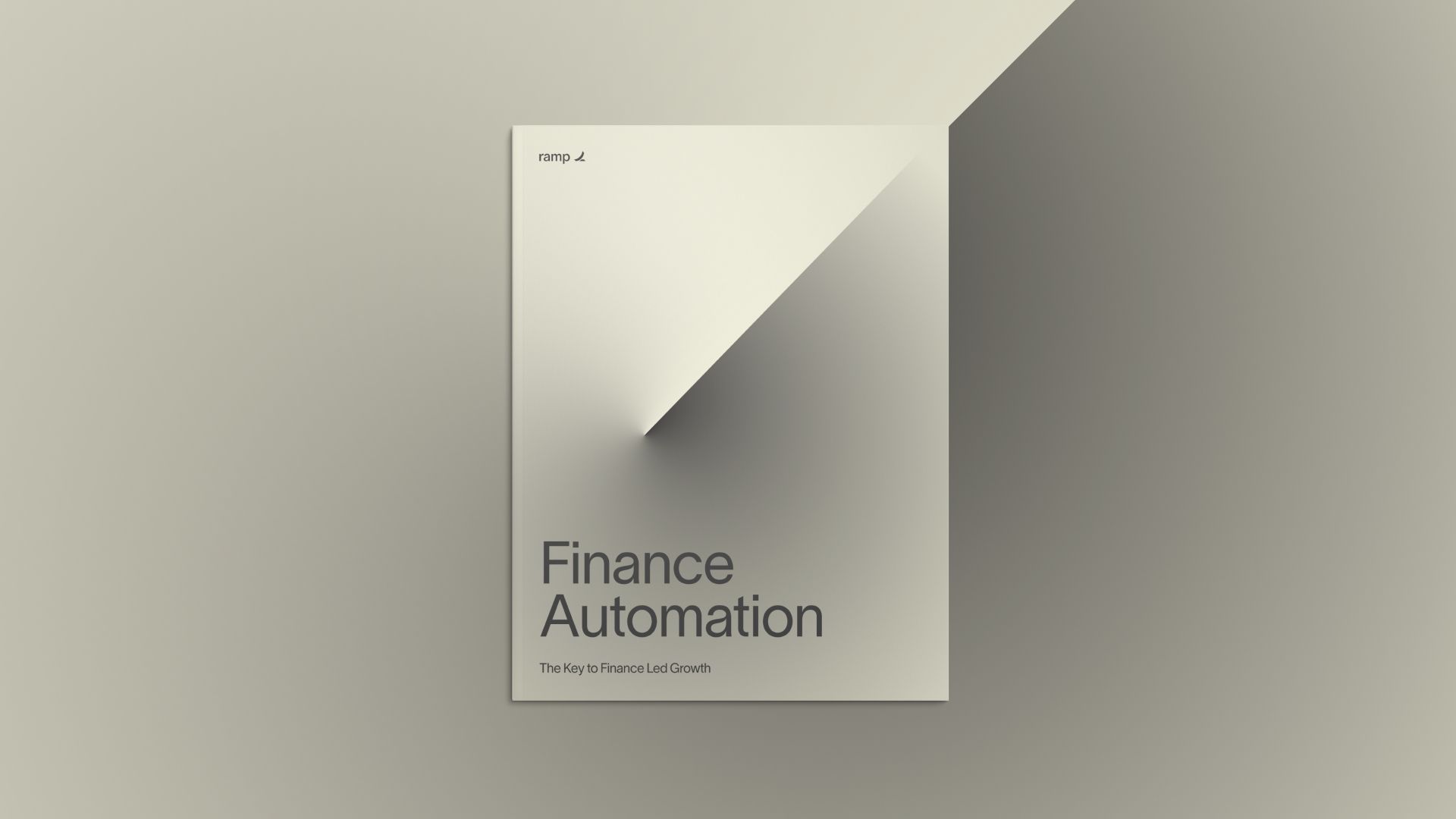| | | | | | | Presented By Ramp | | | | Axios Markets | | By Matt Phillips and Emily Peck ·Apr 04, 2022 | | Happy Monday! Let us all hope for a week that's free of Slap discourse. It's spring and we're seeing lots of green shoots up here in the Northeast. ⚡️ Interested in all things crypto and web3? Sign up for the Axios Crypto newsletter launching today! Today's newsletter is 1,147 words, 4.5 minutes. | | | | | | 1 big thing: Bond market bets Fed will overdo it |  | | | Photo illustration: Aïda Amer/Axios. Photo: Drew Angerer/Getty Images | | | | A riddle: When does a report showing a booming job market cause recession alarm bells to start clanging? - The answer is when exceptional jobs growth leads bond investors to bet that the Federal Reserve will raise rates so aggressively to quash inflation that it will be forced to reverse course later. That's what happened Friday, Axios' Neil Irwin writes.
Why it matters: When the bond yield curve inverts, as it did Friday, it's traditionally a harbinger of recession. And while that's getting well ahead of things, it's clear the Fed is on an increasingly narrow tightrope. State of play: The March employment data was terrific, with 431,000 jobs added, positive revisions to January and February and a falling jobless rate. More Americans joined the labor market, and wages showed solid growth. - Just two weeks before, Fed chair Jerome Powell said that he sees a "very, very tight labor market, tight to an unhealthy level." The new numbers, especially around the unemployment rate, suggest it is becoming even more so.
- That means the jobs numbers amount to a green light for more aggressive tightening, including what looks likely to be the first half-percentage point rate hike in 22 years at a policy meeting that will conclude May 4.
The market reaction: That's why the jobs numbers caused an upward surge in 2-year Treasury yields, to 2.46% from 2.28%. Longer-term yields rose by less, with the 10-year ending the day at 2.38%. - When long-term rates are lower than short-term rates, that's an inversion. Essentially, bond investors are betting that the Fed will end up reversing those near-term rate hikes down the road, presumably because of a weakening economy.
Yes, but: The recession talk appears premature. Current bond prices do imply slower growth ahead, but do not currently suggest the Fed will overdo its tightening campaign so much as to face outright economic contraction in the near future. - The 5-year yield remains higher than the 2-year yield, which is not consistent with a recession in the medium term.
None of that suggests a 1980s Paul Volcker-era strategy of hiking rates to effectively crush the economy is likely. Markets are pricing in something closer to the Fed's successful "mid-cycle adjustment" rate cuts of 2019 that followed the last yield curve inversion. The bottom line: As New York Fed president John Williams said in a speech Saturday, "One of the things we've learned from the pandemic is to expect the unexpected." Go deeper. |     | | | | | | 2. Catch up quick | | 🏦 JPMorgan could lose $1 billion on its business in Russia, CEO Jamie Dimon says. (WSJ) 💰CEO pay is set to break records. (WSJ) 💲Elon Musk takes 9.2% passive stake in Twitter. (Bloomberg) ✅ How two warehouse workers bested Amazon in union fight. (NYT) |     | | | | | | 3. Halo effect for weapons companies |  Data: FactSet; Chart: Axios Visuals The Russia-Ukraine conflict is changing the conversation around investing in the business of defense, Axios' Javier David writes. Why it matters: Defense contractors are polarizing, and often take heat for profiting from armed conflicts. But Eastern Europe's turmoil underscores the dirty but necessary work of waging war and appears to be thawing investor attitudes toward the sector. - Case in point: At least one investment firm that previously avoided weapons companies is loosening restrictions in direct response to Russia's aggression, as the WSJ reported.
Catch up fast: Western governments are shipping equipment to Ukraine en masse, and weapons manufacturers are immediate beneficiaries. - The Biden administration is weighing a new round of aid worth $500 million. Absent a firm pullback from Russia, governments intend to surge more hardware into Ukraine.
- Investors are taking note, with Raytheon, AeroVironment and Lockheed all handily beating the broader market year to date.
What they're saying: Behind the paradigm shift is "high demand for land-based weapons" like the drones, missiles and fighter jets manufactured by those three companies, according to a recent research note by CFRA. - "U.S. allies witnessing the war in Ukraine are likely to step up defense spending in the coming years to deter future aggression, providing another avenue for U.S. defense firms to grow revenues," CFRA analysts wrote.
What to watch: Whether Russia commits to de-escalating (or pulls off a victory), which would curb the immediate flow of weapons into Ukraine. |     | | | | | | A message from Ramp | | What finance teams are missing | | |  | | | | Too many businesses don't fully leverage their finance automation tools. Take note: Despite automating, only half of finance leaders have real-time visibility, and more than half report challenges with wasted spending. Learn how to achieve more. | | | | | | 4. 🏘 Housing boom = jobs boom |  Data: Bureau of Labor Statistics, FactSet; Chart: Axios Visuals Despite a sharp rise in mortgage rates, U.S. housing market activity continues to sizzle, and — at least through March — generate a juicy slab of new jobs each month, Matt writes. The big picture: There are now nearly 1.8 million people working in real estate services, more than before the pandemic hit. - Friday's strong employment report showed that almost 14,000 new jobs were created in real estate and rental leasing in March, after an average of about 11,000 per month over the last year.
- The last two years have been the busiest stretch of real estate job creation since the housing bubble was at its bubbliest in the years between 2002 and 2005.
Flashback: When the pandemic hit, the Fed cut interest rates to almost nothing, mortgage rates plunged, and a housebound nation turned to Zillow. Presto, employment bonanza. - Yes, but: Now that the Fed's raising rates, the 30-year fixed mortgage rate is nearly 4.7%, up from just a bit over 3% at the end of 2021, according to Freddie Mac.
What we're watching: That could act as a brake on housing activity at some point, potentially slowing job growth. - Employment in residential construction fell by 2,600 in March, the largest drop in almost a year.
|     | | |  | | | | If you like this newsletter, your friends may, too! Refer your friends and get free Axios swag when they sign up. | | | | | | | | 5. Two words to help you get dressed for work |  | | | Mary Barra. Photo: Getty Images/ Drew Angerer | | | | Back when General Motors CEO Mary Barra was an HR executive at the automaker, she revised the dress code from several pages to two words: Dress appropriately. - Back then there was some agreement on what that meant, Emily writes.
Why it matters: Now as people slowly return to the office, there's confusion. Many (🙋♀️) grew accustomed to elastic waistbands; we haven't buttoned or zipped pants in a while. There are big questions: Are sweatpants OK in an office? What if they're called joggers? - My editor (a queen, obviously) said I can wear whatever to the Axios office. But there are other managers who are confused, reports the WSJ. Dress codes are now "the elephant in the room in every workplace right now," one told the paper.
State of play: The time apart from the strictures of the office gave people the freedom to realize they didn't need to stuff themselves into a pair of tight shoes to do their jobs, accelerating a yearslong trend toward more casual office wear. - "Dressing however we wanted revealed there weren't any downstream costs to relaxing our idea of professional attire," said Erica Bailey, a Ph.D. candidate at Columbia Business School and co-author of a paper on pandemic business attire.
What's next: Everything is up in the air right now, but Bailey said letting workers figure out what's appropriate makes them feel more authentic and in turn more engaged at work. "There are so many benefits," she said. (I recommend you send this to your boss.) |     | | | | | | A message from Ramp | | Stay ahead of the competition | | |  | | | | The future of finance is automation. But not all teams have adapted, or they don't properly leverage the technology. That's why finance automation platform Ramp interviewed more than 500 finance leaders to give your team the data and tools needed to advance. Download the report. | | |  | It's called Smart Brevity®. Over 200 orgs use it — in a tool called Axios HQ — to drive productivity with clearer workplace communications. | | | | | | Axios thanks our partners for supporting our newsletters. If you're interested in advertising, learn more here.
Sponsorship has no influence on editorial content. Axios, 3100 Clarendon Blvd, Suite 1300, Arlington VA 22201 | | | You received this email because you signed up for newsletters from Axios.
Change your preferences or unsubscribe here. | | | Was this email forwarded to you?
Sign up now to get Axios in your inbox. | | | | Follow Axios on social media:    | | | | | |












No comments:
Post a Comment